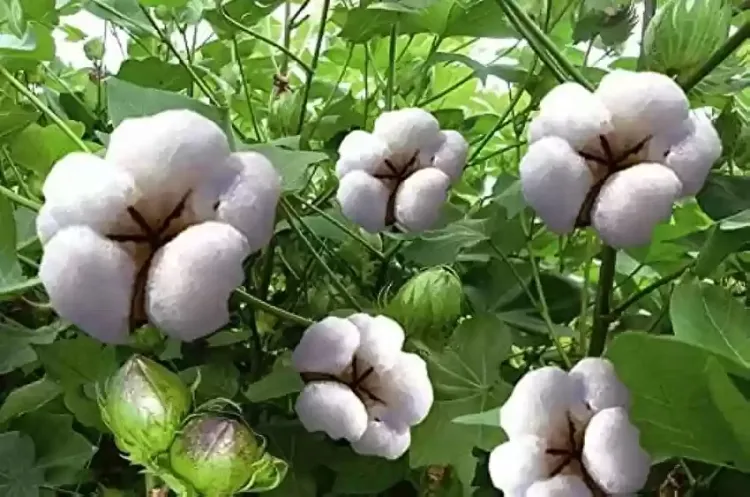Cotton: The Essential Fiber Shaping Industries and Economies Worldwide...!!!
Cotton is an indispensable natural fiber with a wide range of uses in textiles, consumer goods, industrial applications, and more. Its cultivation requires specific climatic and soil conditions, careful management of planting and growth, and efficient harvesting and processing techniques.

Cotton is a versatile and widely used natural fiber, renowned for its softness, durability, and breathability. It is a fundamental raw material in the textile industry and has various other applications. Cotton cultivation has been practiced for thousands of years and plays a significant role in the economies of many countries.
Uses of Cotton
-
Textiles and Clothing:
-
Fabric Production: Cotton is primarily used to produce fabrics for clothing, including shirts, dresses, jeans, underwear, and socks. Its natural properties make it comfortable, breathable, and suitable for all seasons.
-
Home Textiles: Cotton is used to produce home textiles such as bed sheets, pillowcases, towels, curtains, and upholstery. It is favored for its softness, absorbency, and durability.
-
-
Industrial Applications:
-
Medical Supplies: Cotton is used to manufacture medical supplies such as bandages, gauze, cotton balls, and swabs. Its hypoallergenic properties make it suitable for wound care and hygiene products.
-
Filters: Cotton fibers are used in various filtration systems, including coffee filters, air filters, and water filters, due to their natural absorbency and filtration capabilities.
-
-
Consumer Goods:
-
Personal Care Products: Cotton is used in personal care products such as cotton pads, makeup removal wipes, and baby wipes. Its gentle and absorbent nature makes it ideal for skincare and hygiene purposes.
-
Toys and Stuffing: Cotton is used as stuffing material for toys, pillows, and cushions. It provides a soft and fluffy texture, making it comfortable and safe for children.
-
-
Paper and Packaging:
-
Cotton Paper: Cotton fibers are used to produce high-quality paper, often referred to as cotton paper or rag paper. This type of paper is durable, archival, and commonly used for important documents, currency, and art prints.
-
Packaging: Cotton is used in packaging materials, including biodegradable packing peanuts and eco-friendly packaging solutions.
-
Cultivation of Cotton
-
Climate and Soil Requirements:
-
Climate: Cotton is a warm-season crop that requires a long frost-free period, plenty of sunshine, and moderate rainfall. It thrives in tropical and subtropical regions with temperatures ranging from 20°C to 30°C.
-
Soil: Cotton grows best in well-drained, fertile soils with a pH range of 5.8 to 8.0. Sandy loam and loam soils are ideal for cotton cultivation.
-
-
Sowing and Planting:
-
Seed Selection: High-quality, disease-resistant cotton seeds are selected for planting. These seeds are often treated with fungicides and insecticides to protect them from pests and diseases.
-
Sowing: Cotton seeds are typically sown directly into the soil using mechanical planters. The planting depth and spacing vary depending on the cotton variety and local agricultural practices.
-
-
Growth and Development:
-
Germination: Cotton seeds germinate within a week of planting, and seedlings emerge from the soil. The young plants require consistent moisture and protection from pests and weeds.
-
Vegetative Growth: During the vegetative stage, cotton plants develop a robust root system, stems, and leaves. Adequate irrigation and nutrient management are essential for healthy growth.
-
-
Flowering and Fruiting:
-
Flowering: Cotton plants produce large, white or yellow flowers that eventually turn pink or red before shedding. Each flower develops into a cotton boll, which contains the cotton fibers and seeds.
-
Boll Development: The cotton bolls mature over several weeks, and the fibers within the bolls lengthen and thicken. Proper pest management and irrigation are crucial during this stage to ensure high-quality fiber production.
-
-
Harvesting:
-
Manual Harvesting: In some regions, cotton is handpicked to ensure minimal damage to the fibers. This method is labor-intensive but results in higher-quality cotton.
-
Mechanical Harvesting: In modern agriculture, mechanical harvesters are used to pick cotton efficiently. These machines separate the cotton fibers from the bolls and leave the plant stalks intact.
-
-
Processing:
-
Ginning: After harvesting, cotton bolls are transported to ginning facilities, where machines separate the cotton fibers from the seeds. The cleaned fibers, known as lint, are compressed into bales for further processing.
-
Spinning: The cotton lint is spun into yarn or thread, which is then woven or knitted into fabrics. The yarn can also be dyed and finished to produce various textile products.
-
Cotton is an indispensable natural fiber with a wide range of uses in textiles, consumer goods, industrial applications, and more. Its cultivation requires specific climatic and soil conditions, careful management of planting and growth, and efficient harvesting and processing techniques. As one of the most important agricultural crops globally, cotton plays a vital role in the economies of many countries and continues to be a valuable resource in various industries. Embrace the versatility and significance of cotton and explore its many applications and benefits in your daily life.
What's Your Reaction?

















